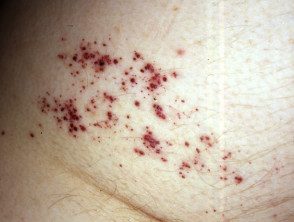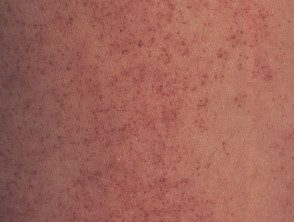What is it angioma serpiginous?
Serpiginous angioma is a skin condition in which there are small blood vessels near the surface of the skin. It appears as small red dots (puncta) that group together to form a linear or like a snake training (serpiginous pattern) or ring-shaped pattern (twist). No bleeding inflammation or pigmentation.
Serpiginous angioma

Serpiginous angioma

Serpiginous angioma

Serpiginous angioma
What are the signs and symptoms?
Serpiginous angioma can appear anywhere on the body, but it most often appears on the buttocks and legs. Mucous Membranes, palms, and soles are generally not affected.
The condition begins in early childhood as one or more small lesions that grow over a period of months or years. Usually, when a child reaches puberty, the patches stop growing and remain unchanged throughout life. On rare occasions, they disappear partially or completely.
Why is it happening and who is at risk?
The cause of the serpiginous angioma remains unclear, but it is possibly an inherited condition. Ninety percent arises in women and 80% is affected before the age of 20. In some cases, the serpiginous angioma is present at birth.
What treatments are available?
Serpiginous angioma is a harmless condition that does not require medical treatment. Treatment with a vascular To be It can be done for aesthetic reasons.

